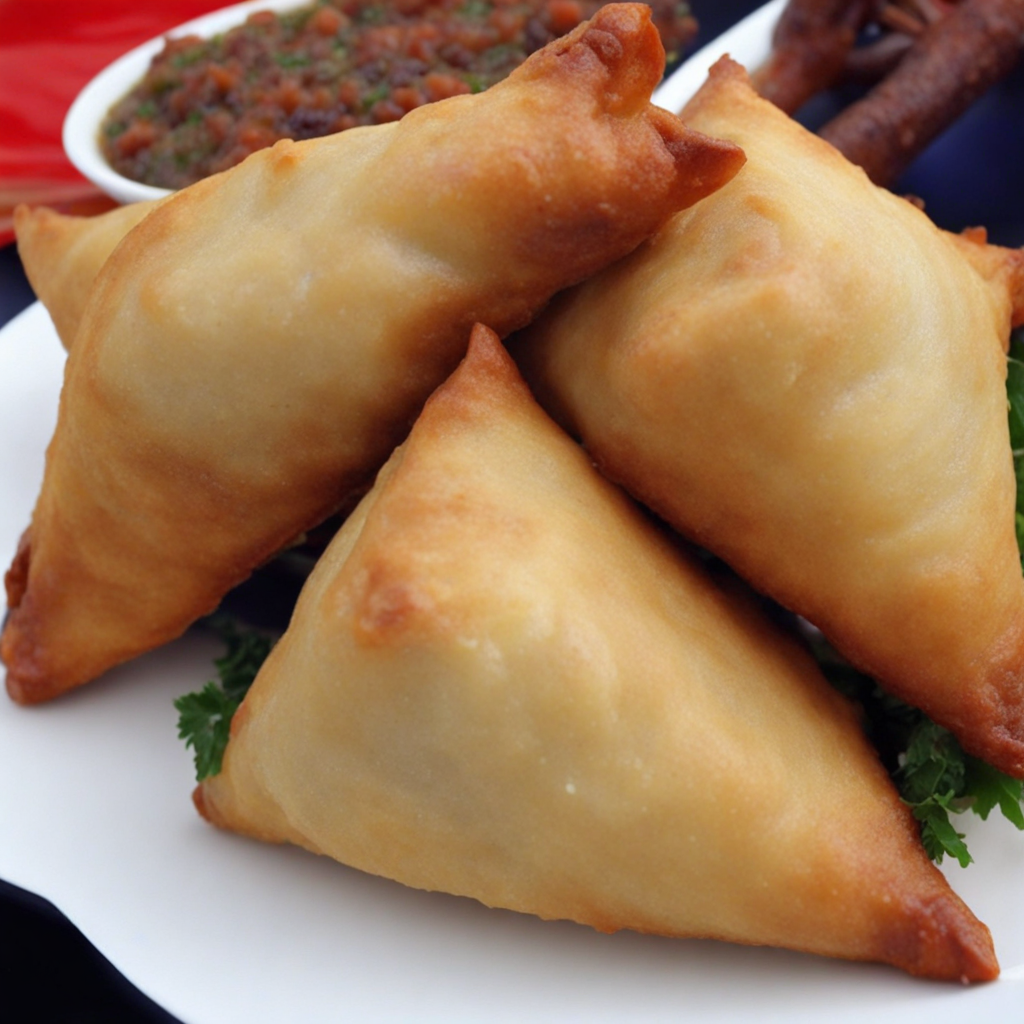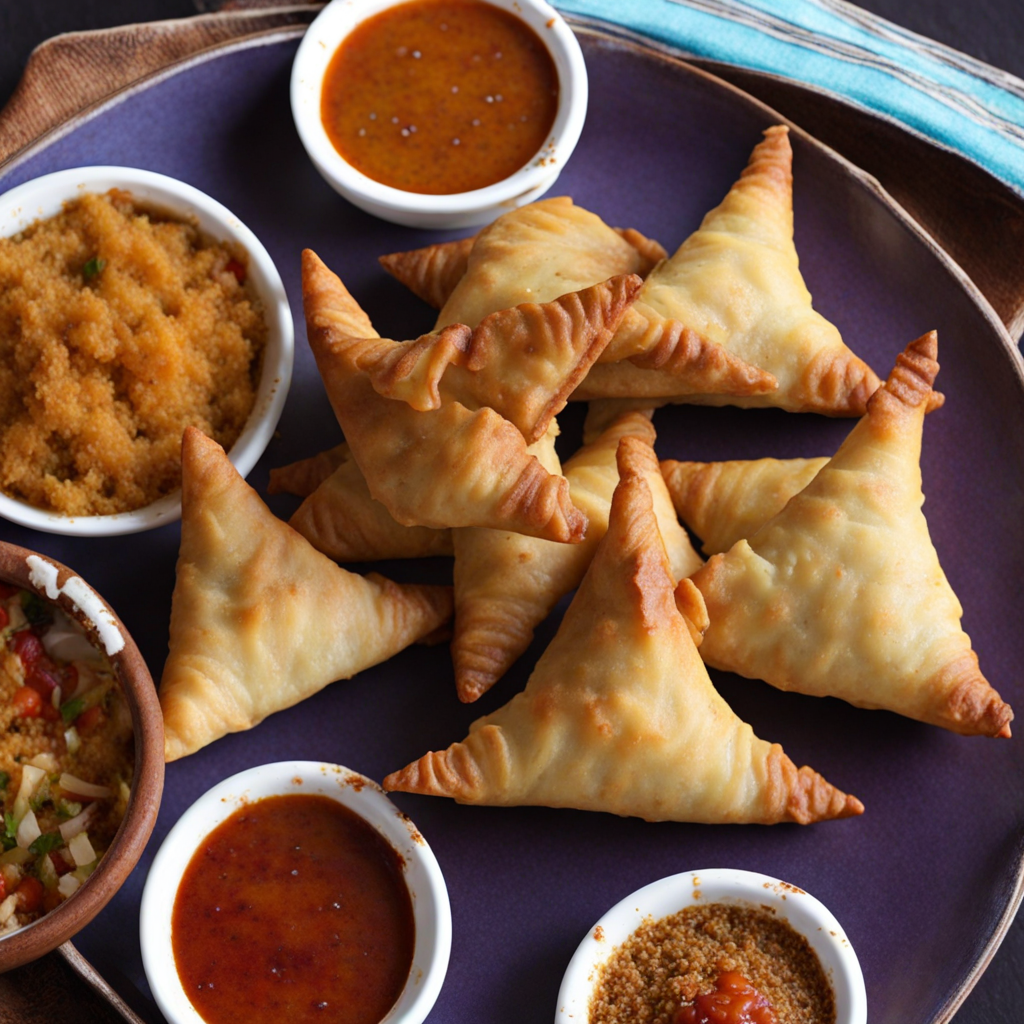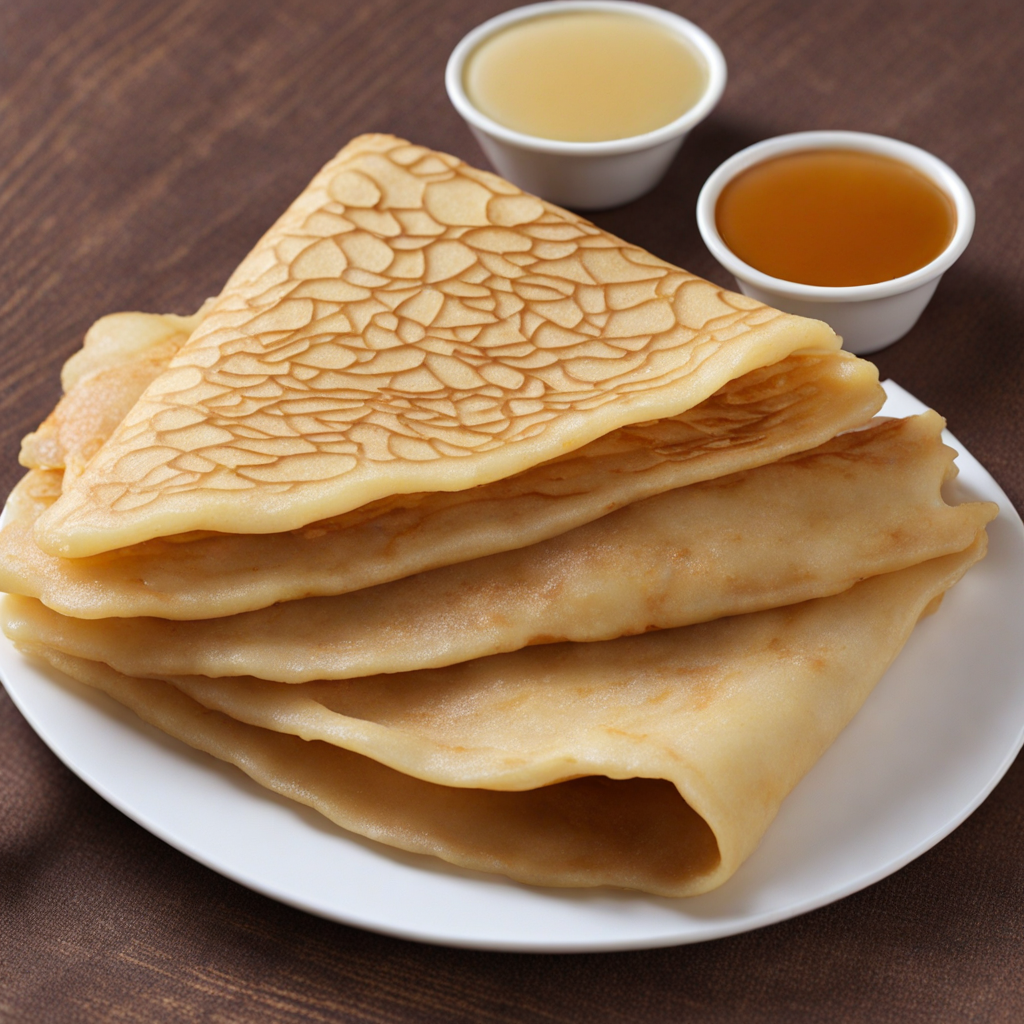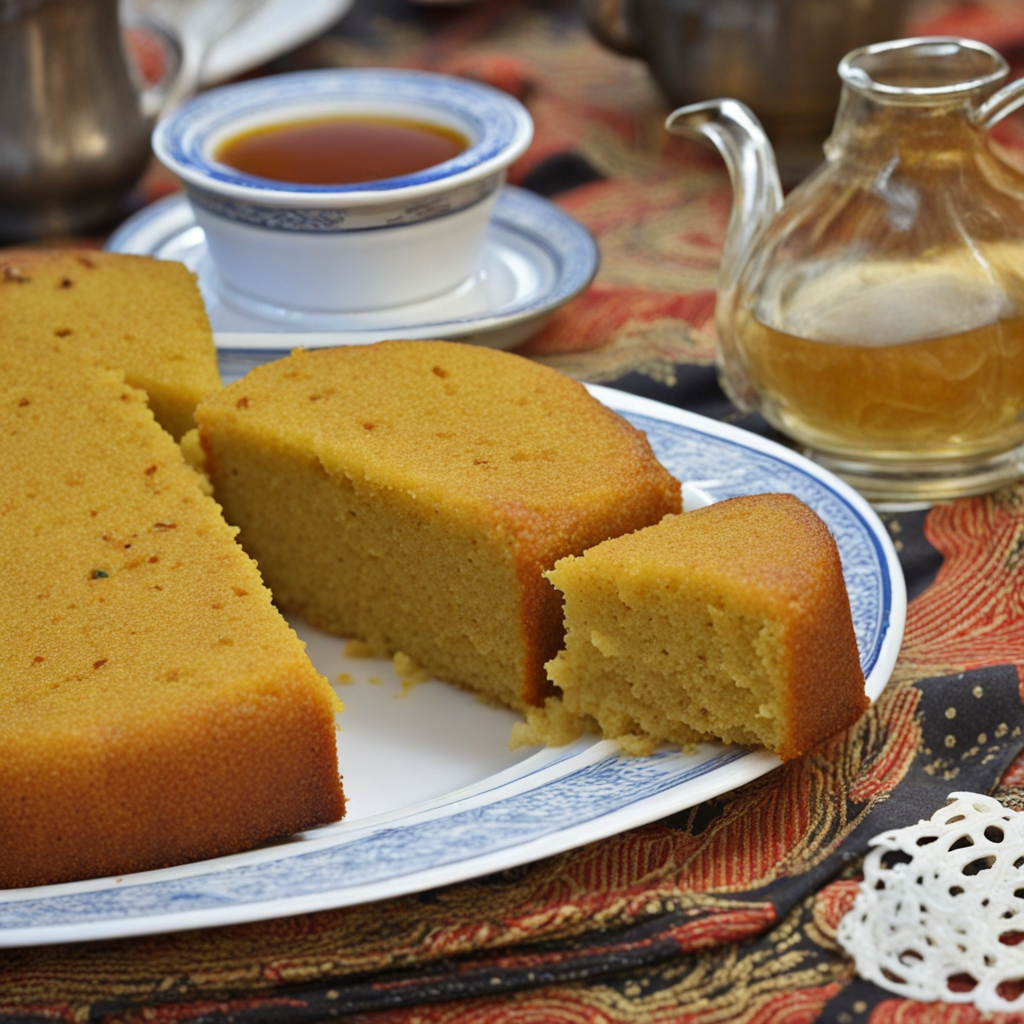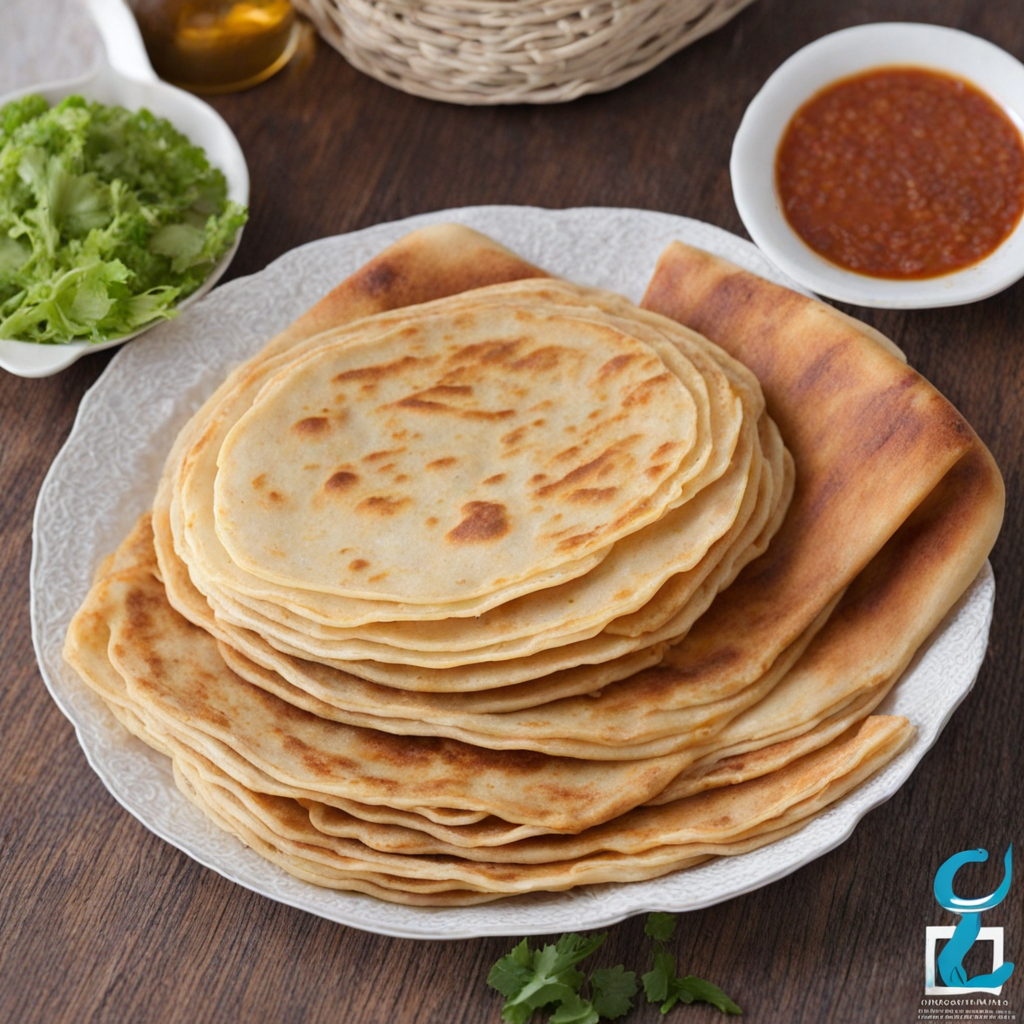Sambusa
Sambusa is a delightful Somali pastry that showcases the rich culinary heritage of Somalia. These triangular-shaped pastries are made from a thin, flaky dough that is expertly filled with a variety of savory fillings. The most common filling consists of spiced minced meat, typically beef or lamb, combined with onions, garlic, and a medley of warming spices such as cumin and coriander. Vegetarian versions are also popular, often featuring lentils, potatoes, or a mix of vegetables seasoned to perfection. Once filled, the sambusas are deep-fried until golden and crispy, creating a beautiful contrast between the crunchy exterior and the tender, flavorful filling within. One of the standout features of sambusa is its versatility. They can be enjoyed as a delightful snack, a starter, or even as part of a festive meal, making them a beloved dish in Somali households and beyond. Each bite offers a burst of flavor, with the spices providing warmth and depth, while the crispy shell adds a satisfying texture. Sambusa is often accompanied by a dipping sauce, such as a tangy tamarind or a spicy chili sauce, which enhances the taste experience and adds a kick that complements the savory filling. In Somali culture, sambusa holds a special place, often served during Ramadan and other celebrations, symbolizing hospitality and community. The process of making sambusa is often a communal activity, bringing families together in the kitchen to share techniques and stories. Whether enjoyed at a bustling street market or at a family gathering, sambusa is more than just food; it's a celebration of Somali culture that invites everyone to savor its unique flavors and share in the joy of eating together.
How It Became This Dish
The Story of سمبوسة (Sambusa): A Culinary Journey Through Somalia Origins and Historical Context The story of سمبوسة (sambusa) is a delectable narrative that weaves through centuries, cultures, and continents. While the exact origins of sambusa are often debated, it’s widely believed that this savory pastry can trace its beginnings to ancient Persia, where it was known as "sambusak." The Greeks and Romans, intrigued by the Persian culinary practices, likely contributed to its spread throughout the Mediterranean and into the Middle East. As trade routes expanded, so did the sambusa, reaching the shores of East Africa, particularly Somalia. By the time sambusas arrived in Somalia, they adapted to local ingredients and flavors, becoming an integral part of the Somali culinary landscape. This adaptation is a testament to the resilience and creativity of Somali cooks, who transformed the dish into a beloved staple with distinct characteristics. Cultural Significance In Somalia, sambusas are more than just a snack; they are emblematic of community, hospitality, and celebration. Traditionally, these pastries are filled with a variety of ingredients, including spiced meat, lentils, vegetables, or cheese, all encased in a thin, crispy pastry. The fillings often reflect local customs and seasonal availability, showcasing the ingenuity of Somali cuisine. Sambusas hold a special place during significant events, particularly during Ramadan, where they are commonly served as iftar, the meal to break the fast. Families gather to share sambusas, which symbolize togetherness and the joy of communal feasting. Their presence during celebrations, weddings, and festive occasions further cements their importance in Somali culture. The act of making sambusas is also a communal affair. Families often come together to prepare these pastries, emphasizing the values of collaboration and shared heritage. The preparation is a ritual, with each family member contributing to the process—whether it’s mixing the spices, rolling out the dough, or filling and frying the sambusas. This act of coming together not only strengthens familial bonds but also passes down culinary traditions through generations. Culinary Evolution As sambusas traveled through time and space, they evolved, absorbing influences from various cultures and cuisines. In Somalia, the sambusa has seen significant regional variations. The most common filling is spiced minced meat, typically beef or lamb, mixed with onions, garlic, and a blend of spices such as cumin, coriander, and black pepper. However, vegetarian options have also gained popularity, particularly among those who prefer lentils or vegetables. The preparation methods for sambusas have also diversified. While many still prefer the traditional method of frying, healthier alternatives such as baking have emerged, reflecting changing dietary preferences and health consciousness among the Somali diaspora. This adaptability has allowed sambusa to remain relevant across generations and geographical boundaries. The sambusa has also found its way into Somali diaspora communities around the world, particularly in countries like the United States, Canada, and the United Kingdom. Here, it serves as a culinary bridge, connecting Somali immigrants to their homeland and introducing the flavors of Somali cuisine to a broader audience. In these new environments, sambusas are often sold in restaurants and food trucks, showcasing their versatility and appeal beyond traditional settings. Modern Day Relevance In contemporary Somalia and among the diaspora, sambusas have retained their status as a beloved food item, while also evolving with modern tastes. Chefs and home cooks alike experiment with innovative fillings and cooking techniques, from spiced chicken and fish to fusion variations that incorporate local ingredients found in their new homes. The emergence of gourmet sambusas, filled with ingredients like truffle oil or exotic cheeses, reflects a growing trend of culinary creativity within Somali cuisine. Social media has played a pivotal role in popularizing sambusas among younger generations. Platforms like Instagram and TikTok have provided a space for cooking enthusiasts to share recipes, cooking tips, and plating ideas. This digital renaissance has not only revived interest in traditional recipes but has also encouraged a new appreciation for Somali cuisine as a whole. As sambusas gain visibility, they contribute to a larger narrative of Somali identity and cultural pride. Sambusa in a Global Context The global culinary landscape is increasingly embracing street food culture, and sambusas have found their niche within this trend. As food markets and festivals celebrate diverse cuisines, sambusas are often featured prominently, drawing in curious eaters eager to experience new flavors. This exposure has led to an appreciation for the craftsmanship involved in making sambusas, from the delicate dough to the intricate folding techniques that define the final product. Through its journey from ancient Persia to the streets of modern Somali cities and beyond, sambusa encapsulates the essence of culinary evolution—where tradition meets innovation, and where food serves as a vessel for cultural storytelling. Each bite of a sambusa carries with it the weight of history, the warmth of community, and the flavors of home. Conclusion The history of سمبوسة (sambusa) is a rich tapestry woven from diverse cultural threads. From its origins in ancient Persia to its prominent role in Somali celebrations and its modern adaptations, sambusa offers a delicious glimpse into the heart of Somali culinary traditions. It serves not only as a beloved food item but also as a symbol of resilience, community, and the enduring power of food to connect us across time and space. As we savor these crispy pastries, filled with spiced goodness, we partake in a global story that transcends borders, reminding us of the shared humanity found in our culinary heritage. Whether enjoyed at a bustling market, a family gathering, or a quiet evening at home, sambusas continue to embody the spirit of Somali culture, inviting all who taste them to partake in a journey of flavor and history.
You may like
Discover local flavors from Somalia


